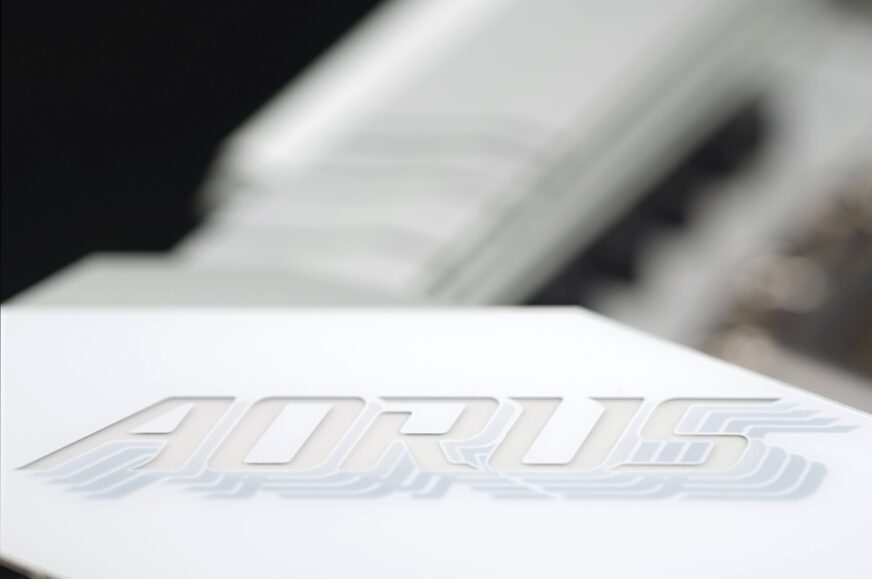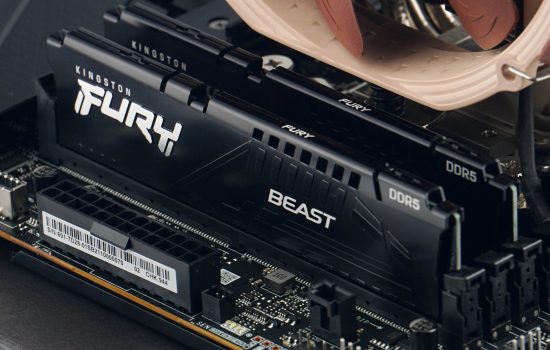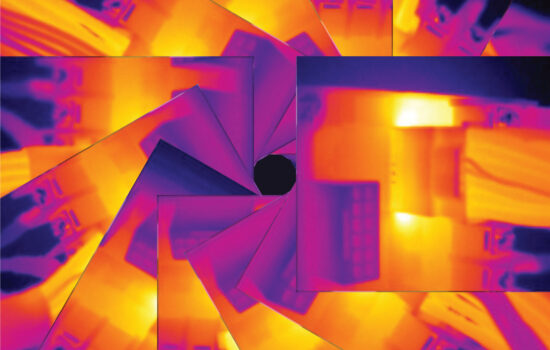Conclusion
We tested the first Z790 motherboard primarily designed for use with the 14th generation Intel Core (Raptor Lake) processors. The chipset’s features haven’t changed, but there’s a lot of new, noteworthy stuff around it. That includes upgraded network connectivity headed by WiFi 7 and, finally, 5-gigabit Ethernet. And in the year that it’s been at it, Gigabyte has worked on a lot of details too. Some were more successful, others less so.
Conclusion
It’s not just a board that is attractive with an unusual, white PCB. The range of things that make the Aorus Z790 Aorus Pro X board worth paying attention to is quite wide. First of all, it’s the robust VRM for which it’s possible to run processors with very high power output (i.e. over 300W) while at the same time being highly efficient as far as the LGA 1700 platform is concerned. Three of the five Z790 boards tested so far are worse, and with comparable computing performance they achieve slightly higher power draw. And that’s the case even with lighter gaming or single-threaded workloads. Only the idle power draw is relatively higher, average compared to the other boards.
With settings with limited input power, the Aorus Z790 Aorus Pro X can behave a little strangely. With power draw (154,17 W) comparable to, for example the Asus ROG Strix Z790-E Gaming WiFi (154,13 W) significantly lower computational performance is achieved under high load. By the optics of Cinebench R23, it’s 22,931 points versus 32,205. The reason for this is that the board pushes more performance to weaker E cores (their clock speeds are significantly higher than on competing boards) and there’s not much left for P cores (with very low clock speeds). However, it is possible that with a different processor (than the Core i9-13900K), such as some Raptor Lake Refresh model, the behavior will be different. Anyway, keep this situation in mind and check if your build performance is as expected.
The above “detriment” was observed only under high load. Gaming performance is already comparable to other boards in the tested mode (with the PL1 at 125 watts and the 253-watt PL2 with the Tau time-limited). In this case, in fact, the processor no longer hits the power limit and is safely below it. The achieved CPU clock speeds are thus the same and the power draw scales virtually 100 percent as well.
The reason to prefer this board over older Z790 models may also lie in the more modern network connectivity with WiFi 7 and 5-gigabit Ethernet. We measured speeds of over 500 MB/s in both directions. In practice, although many devices on the network will be slower and will “slow down” the board, if you are building a computer with a view to using it for a long time, several years, the network will not get old so quickly. Disk connectivity is also plentiful, the Aorus Z790 Aorus Pro X has as many as five fast M.2 slots for SSDs, which is not commonplace for all boards with this chipset. On the other hand, it should also be added that there are only four SATA ports (instead of six, which we see less and less commonly).
The first M.2 slot also counts on a fast SSD with PCIe 5.0 support, and it really is serious. This is evidenced by the perfect cooler, which made it to the very top of our charts in terms of efficiency. But the results of the shared cooler for four slots are already weaker. Although even that one doesn’t look bad in the charts, that’s because it captures the best result in the outermost position, next to the chipset. In the latter, cooling is still good and efficiency drops only in the positions of the second to fourth slots. This is due to worse contact with the thermal pad.
The cooling of the SSD controller is still fine, but the contact with the memory is already insufficient and more than a cooler, this heatsink acts as a thermal insulator. This state of affairs is somewhat the result of simplifying the mounting system, which works only on the basis of snapping mechanisms without the necessary pressure. With different SSDs the results can be different. And they are also influenced by the way you screw the board to a case. Also, different PCB deformation of the motherboard affects the cooler’s pressure to the SSD. Anyway, Gigabyte should provide such conditions here that it is tight enough at all times and that all SSD chips only more or less (but always enough) sink into the thermal pad of the cooler.
Otherwise, the Aorus Z790 Aorus Pro X is a great board from a cooling perspective. The VRM also reaches lower temperatures than on competing, even more expensive boards at comparable power draws. We have not yet tested a board that, at three hundred watts, has a surface temperature of the voltage regulators below 70°C. And take into account that the thermal imaging tests are done without a cooler, and this board has a really powerful one. So again, the Aorus Z790 Aorus Pro X can handle the most powerful processors without the slightest difficulty. Are you waiting for the Core i9-14900KS? It’ll do just fine. However, for a CPU cooler, such a processor will naturally be a bigger nut to crack.
The Gigabyte Aorus Z790 Aorus Pro X, at a price of around four hundred euros, seems to be an extremely attractive motherboard for powerful builds, which are expected to have above-standard networking and connectivity in general. And that rare white design… Visually, it would also look good in the build we did in November.
English translation and edit by Jozef Dudáš
| Gigabyte Z790 Aorus Pro X |
| + Mimoriadne silná 21-fázová napájacia kaskáda (VRM)... |
| + ... zvládne bez strát výkonu aj Core i9-14900K bez limitov napájania |
| + Možnosť ručného pretaktovania CPU zmenou násobiča... |
| + ... a „automatické“ voľby na pretaktovanie cez Gigabyte PerfDrive |
| + Efektívna správa napájania... |
| + ... pri vyssej záťaži efektívnejšiu dosku sme ešte netestovali |
| + Nadštandardne výkonné chladiče VRM... |
| + ... a špičkový chladič SSD prvého slotu M.2 |
| + Až päť rýchlych (štvorlinkových) slotov M.2 na SSD |
| + Osem rýchlych konektorov USB 3.2 na zadnom paneli I/O |
| + Veľmi detailné možnosti správy ventilátorov |
| + EZ-Latch Click na rýchlu (de)montáž SSD |
| + Nadštandardne rýchla sieťová konektivita, 5 GbE a WiFi 7 |
| + Na pomery drahších dosiek atraktívny pomer ceny k hodnote |
| - Nižšia efektivita zdieľaného chladiča SSD pre slabší prítlak |
| - Iba jeden interný konektor na dva porty USB 3.2 gen. 1 |
| - Menšia priorita P jadier v režimoch zníženého výkonu. Nemusí platiť vždy * |
| Odporúčaná maloobchodná cena: 407 eur/9999 Kč |
* With newer BIOSes, the situation may change over time. And maybe it is already different for Raptor Lake Refresh processors (tests were performed with Core i9-13900K of the Raptor Lake generation).
Some of the tested boards are also available in the Datacomp e-store
Special thanks to Blackmagic Design (for licenses for DeNoise AI, Gigapixel AI and Sharpen AI) and Topaz Labs (for licenses for DeNoise AI, Gigapixel AI and Sharpen AI)
- Contents
- Gigabyte Aorus Z790 Aorus Pro X in detail
- What it looks like in the BIOS
- Methodology: Performance tests
- Methodology: How we measure power draw
- Methodology: Temperature and frequency measurements
- Test setup
- 3DMark
- Borderlands 3
- F1 2020
- Metro Exodus
- Shadow of the Tomb Raider
- Total War Saga: Troy
- PCMark and Geekbench
- Web performance
- 3D rendering: Cinebench, Blender, ...
- Video 1/2: Adobe Premiere Pro
- Video 2/2: DaVinci Resolve Studio
- Graphics effects: Adobe After Effects
- Video encoding
- Audio encoding
- Photos: Adobe Photoshop, Affinity Photo, ...
- (De)compression
- (De)encryption
- Numerical computing
- Simulations
- Memory and cache tests
- M.2 (SSD) slots speed
- USB ports speed
- Ethernet speed
- Power draw without power limits
- Power draw with power limits
- Achieved CPU clock speed
- CPU temperature
- VRM temperature – thermal imaging of Vcore and SOC
- SSD temperature
- Chipset temperature (south bridge)
- Conclusion













